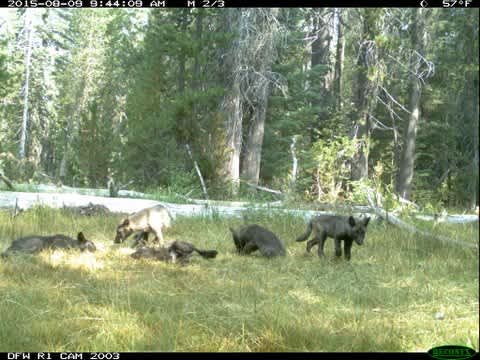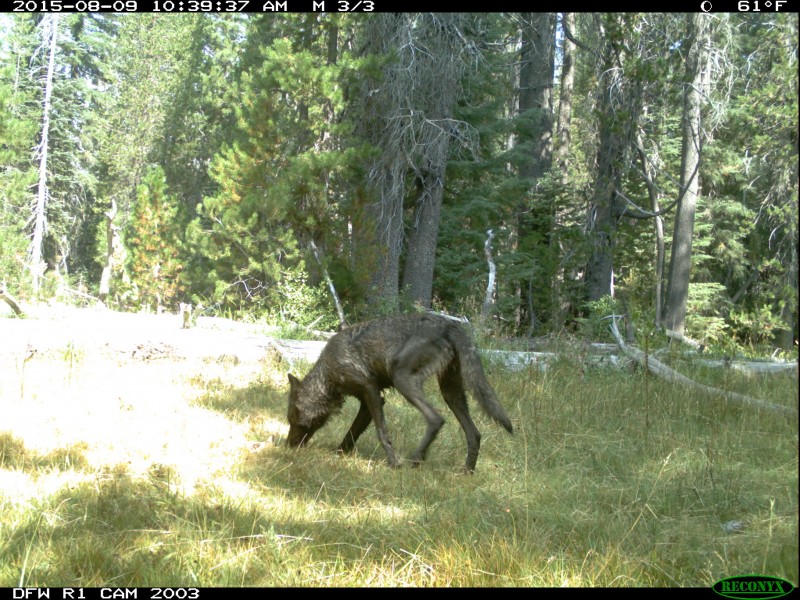Officials: Gray Wolves Have Returned to California
OutdoorHub Reporters 08.25.15

It has been almost a century since California’s last native wolf died, but it seems the species is making an unexpected comeback. The California Department of Fish and Wildlife (CDFW) confirmed on August 20 that two adult gray wolves and five pups have been spotted in Siskiyou County, making it the first wolf pack in the Golden State in nearly 100 years.
“This news is exciting for California,” Charlton H. Bonham, CDFW Director, said in a press release. “We knew wolves would eventually return home to the state and it appears now is the time.”
The discovery came as a surprise for wildlife officials, who first reported sightings of a single wolf in the Northern California county last May. Experts initially believed the wolf was alone and had likely crossed over from Oregon, where they expected it to return. However, subsequent sightings on trail cameras set up in Siskiyou County revealed that the wolf was not alone—and it intended to stay.
“After trail cameras recorded a lone canid in May and July, CDFW deployed additional cameras, one of which took multiple photos showing five pups, which appear to be a few months old and others showing individual adults. Because of the proximity to the original camera locations, it is likely the adult previously photographed in May and July is associated with the group of pups,” the agency stated.
CDFW has officially designated the new wolf family as the Shasta Pack. Officials are now working hastily to finalize the state’s wolf-management plan in order to set down ground rules for any future wolf population. Gray wolves are currently a protected species in California, but experts never expected wolves to return so soon.
“They have beat us to the punch on a couple of occasions now,” Eric Loft, chief of the agency’s wildlife branch, told The Sacramento Bee.

Restoration of the species is a contentious issue in California. On one side animal rights activists have long called for the gray wolf to be reintroduced to the state, while ranchers and rural residents argue that the animals present an unnecessary danger. Ranchers in Siskiyou County are already concerned about the presence of a growing wolf pack, and is petitioning the state to set up a fund to pay ranchers for lost livestock.
“If the public wants wolves, maybe they should support the people that are helping feed the wolves,” said local rancher Jim Rickert.
It is not yet known if the Shasta Pack has taken any livestock in the area. In fact, very little about the pack or its movements are known, and there is still a chance that the wolves may move out of California like OR-7 did. Officials are currently testing if OR-7 and the Shasta wolves are related.
CDFW is also planning on holding public meetings before a draft of the wolf management plan is released.

